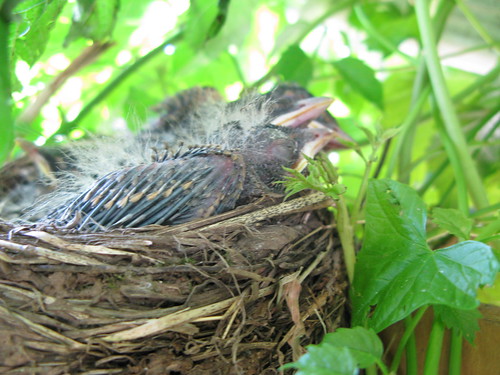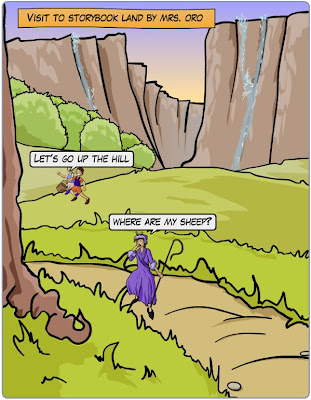 In the 2008-2009 school year, I participated in a Winter Wonderland project. Three teachers put together a really nice wiki. It ran for three months. I completed the January winter song project with my third grade and was about to continue on to the February penguin project when I became interested in working on bird research with the students.
In the 2008-2009 school year, I participated in a Winter Wonderland project. Three teachers put together a really nice wiki. It ran for three months. I completed the January winter song project with my third grade and was about to continue on to the February penguin project when I became interested in working on bird research with the students.
Taking It Global
I am working on a Google document. I have started outlining what I accomplished with my third grade students. I am adding things I would like to include in the project next year. I want to add a collaborative component. I am hoping to find other teachers to join the document and consider having their students work with mine and others around the globe as a Flock of Researchers.
I'm borrowing heavily from the layout of the Monster Project, Middle School 1001 Flat Tales, and Winter Wonderland wikis. I will begin outlining some major components over the next couple of weeks. It is my intention to start the project around December and have students contribute through May. Work could be done as teachers have time available with their students.
General Outline
I am including a link to the Google doc here. If you are interested in brainstorming more about this project idea, please let me know [AnnNJTechTeacher {at} gmail {dot} com] and I will send you an invitation to edit the document and/ or the wiki I'm developing. Please tell me where you heard about the project, too.
The younger the students are when we introduce the concept of copyright and citations, the more likely it will be on their mind as they grow older and work on reports. I think the tie-in to image citations is a nice first step.
Image Citation:
Oro, Ann. Baby Robins in Nest 5. 2009 June 17. 2009 June 3.
http://www.flickr.com/photos/njtechteacher/3593708408/
 I'm not sure how long ago I heard about geocaching. From the first time I heard about it, I knew I had to try it with my students. I had my first opportunity yesterday. The image includes my son holding the first cache we found.
I'm not sure how long ago I heard about geocaching. From the first time I heard about it, I knew I had to try it with my students. I had my first opportunity yesterday. The image includes my son holding the first cache we found.
Planning, Planning, Planning
This year, I had a bit of money left in the technology funding budget to purchase a Garmin etrex Venture HC. I have no experience with geocaching, so I've been collecting bookmarks for a while.
I kept trying to figure out how to arrange a field trip or a class period or two with the GPS and finally realized that our annual walk-a-thon/ field day would be perfect.
The DEN decided to have a Geocaching Day and in preparation they had a few webinars scheduled. Last week, I sat through the archived event and was really happy with the content. The event was led by Bridget Belardi. She has a nice wiki page on geocaching and it includes lots of teacher resources and her set of slides from the webinar.
I put together a short flipchart in Activstudio to get a feel for what students knew about geocaching, explain the activity, and let students register to try it on the field day.
Explaining Geocaching in the Classroom
I took some photos from the web to show what a geocache could look like. I asked questions like:
- What is a geocache?
- What is required?
- What would you be looking for?
Next we took a look at an image of satellites circling the globe and I helped the students understand the concept of needing at least three satellites to get a lock on your position on the GPS unit.
Only one student had ever heard of geocaching and that same student had found all the caches at this park with his family. A fair number of students wanted to try geocaching at the park.
In advance of the field day I thought I would have to hide a geocache, but was stunned to find someone had already hidden a themes worth of caches. There are seven named after the Seven Dwarfs. Each cache has a number that will lead to the Snow White cache.
The Day Arrives
After a walk from the school to the park, I got out my list of seventh grade students who expressed an interest in trying geocaching. The students were tired from the walk and wanted to sit and watch a baseball game. Some sixth grade students overheard that I was trying to get a group to try the geocaching and wanted to go instead.
As we walked, I explained what we were going to do. They had a lot of fun following the arrow on the GPS unit. I knew, in advance, that the geocaches were all off the path that goes around the park. It took a bit to convince the students that we couldn't simply follow the GPS directions to head west because we would have to walk through a pond.
I was impressed with how well the unit worked! It was a really overcast day and I heard that some GPS units have trouble with cloud cover. This unit worked like a champ. We finally closed in to within 20 feet of the cache. I explained that we may not get a better lock on the location than 20 feet, so we started looking. My son had the unit at that point and actually got within 5 feet of the cache with the GPS.
I was a little worried that the students would get tired of hunting before we found the cache. They were really surprised that I didn't know where the cache was and that a stranger hid it. Luckily, I noticed a hole in a tree and what looked like a film canaster. I asked for a volunteer to reach in and get it. Sure enough, it was the cache. It was hidden in an M&M tube that was covered in camoflague contact paper. Inside was a little pen and a scroll of paper to sign.
They immediately wanted to find another cache. We tried another. This time, it was a really tiny two inch canaster covered in black tape and attached to a tree limb with a twist tie. It took a lot of searching, but armed with the excitment of having found one, they were determined to find this cache.
They would have liked to have found a third, but I wanted to see if I could take another group out. Unfortunately, by the time we got back, it was almost time to walk back to school.
Ideas for Next Year
A lot of teachers were really interested in what we were doing. I want to find a grade level and do a really thorough job of tying geocaching into the curriculum. There are so many ways to do this: longitude and latitude, measuring feet and fractions of miles, compass points, or hiding our own cache with a travel bug inside.
One of the many benefits of summer vacation is the luxury of planning time. I can't wait to do this over the coming years with many more students.
 Last year, I explored Kerpoof with my students. As the year wraps up, I wanted to revisit the site. This year, I signed up for a teacher account and I'm learning how that can help me in the classroom.
Last year, I explored Kerpoof with my students. As the year wraps up, I wanted to revisit the site. This year, I signed up for a teacher account and I'm learning how that can help me in the classroom.
The Teacher Account
I found this link to create teacher accounts, signed up, and was ready to run in short order.
It was very easy to create a class id and add student ids within the account. A really nice feature is the ability to print login cards. It lists the web site address (www.kerpoof.com/student), student nickname, student password, and class id all in one convenient card.
The students had no trouble signing in. At this point, I have the Group Chat and the Group Message Board turned off. After working with the students on the website this week, I now realize I will have to turn on the Group Message Board in order to post drawings and comment on projects within the class.
 Student Discoveries
Student Discoveries
We followed the same project that I created last year. I had the students all select the same background shown on the right. It forces the program to display storybook characters in the list of images that can be selected for the story.
The students add characters and dialog bubbles to build a story of what happens in Storybook Land. Last year, the students would become frustrated when they wanted a particular image. As images are dragged on the drawing, some disappear and are replaced.
Today, one of the students pointed out the search box beneath the images. I'm pretty sure it was not there last year. He demonstrated typing princess and clicking Go brings up princess images. He even tried it for ninjas and had success - much to his delight.
It works well with the flat screen iMacs and even runs without too much lag on the older 600MHz Power PC iMacs. I will try this program again next year, with the message boards, so see if we can privately post our drawings and leave comments for each other. The message board is moderated on the teacher side, so it will give us a safe place to practice appropriate messages.
I continue to be happy with this program and look forward to generating more project ideas in the 2009-2010 school year.
 In the 2008-2009 school year, I participated in a Winter Wonderland project. Three teachers put together a really nice wiki. It ran for three months. I completed the January winter song project with my third grade and was about to continue on to the February penguin project when I became interested in working on bird research with the students.
In the 2008-2009 school year, I participated in a Winter Wonderland project. Three teachers put together a really nice wiki. It ran for three months. I completed the January winter song project with my third grade and was about to continue on to the February penguin project when I became interested in working on bird research with the students.

